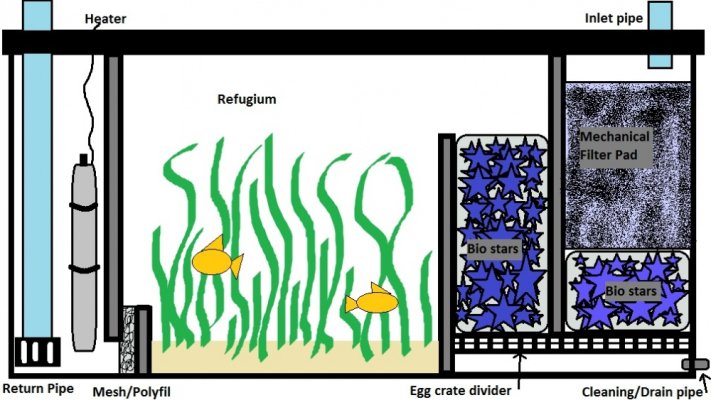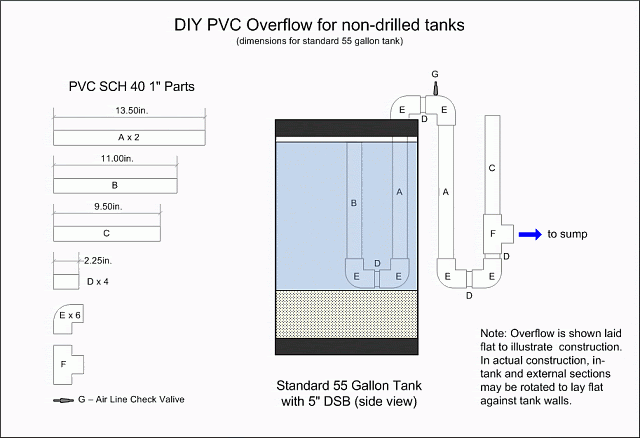Luananeko
Aquarium Advice Addict
I've been doing a bunch of research for a 400+ gallon cichlid tank I'd like to set up once my husband and I move into a bigger place. Since the tank would have an oscar and a group of geophagus, it sounds like live plants would be pretty futile. I've heard about folks using a sump/refugium combo for filtering larger tanks while still letting them keep plants and grow snails/shrimp for live food for the main tank. The idea sounds cool and like it would be easy to put together a DIY solution for it, but I had some questions...
1) I'm reading that sumps should be around 25% of the main tank size... Would a custom stand be able to handle the weight of both the main tank and the sump underneath it (400+ gallons for the main tank, 100+ gallons for sump)? Or would it need to go off to the side to distribute weight?
2) Is there any reason you couldn't turn the refugium section of the sump into another tank on display? Seems a waste to have a planted portion of the tank with critters you can't see unless doing maintenance...
3) If you turned the refugium into another display tank, would you be able to keep more than just snails/shrimp/plants in it? Obviously it would have to be lightly stocked to avoid negating the benefit of the plants... Maybe half normal stocking, or would it have to be even less?
4) Would the sump alone be enough filtration if the refugium was partially stocked, or would it be a good idea to add in a canister filter too?
I'm thinking the final set up would look something like... Tank drains into sump with mechanical filtration & biotubes, then drains into the refugium, then drains into section with return pump, which pipes into the intake of the canister filter, which then pumps the output back into the main tank... That way the water from the main tank gets filtered before going into the refugium, and then it's filtered again before going back into the main tank. Would this work, or am I overcomplicating things?
1) I'm reading that sumps should be around 25% of the main tank size... Would a custom stand be able to handle the weight of both the main tank and the sump underneath it (400+ gallons for the main tank, 100+ gallons for sump)? Or would it need to go off to the side to distribute weight?
2) Is there any reason you couldn't turn the refugium section of the sump into another tank on display? Seems a waste to have a planted portion of the tank with critters you can't see unless doing maintenance...
3) If you turned the refugium into another display tank, would you be able to keep more than just snails/shrimp/plants in it? Obviously it would have to be lightly stocked to avoid negating the benefit of the plants... Maybe half normal stocking, or would it have to be even less?
4) Would the sump alone be enough filtration if the refugium was partially stocked, or would it be a good idea to add in a canister filter too?
I'm thinking the final set up would look something like... Tank drains into sump with mechanical filtration & biotubes, then drains into the refugium, then drains into section with return pump, which pipes into the intake of the canister filter, which then pumps the output back into the main tank... That way the water from the main tank gets filtered before going into the refugium, and then it's filtered again before going back into the main tank. Would this work, or am I overcomplicating things?



